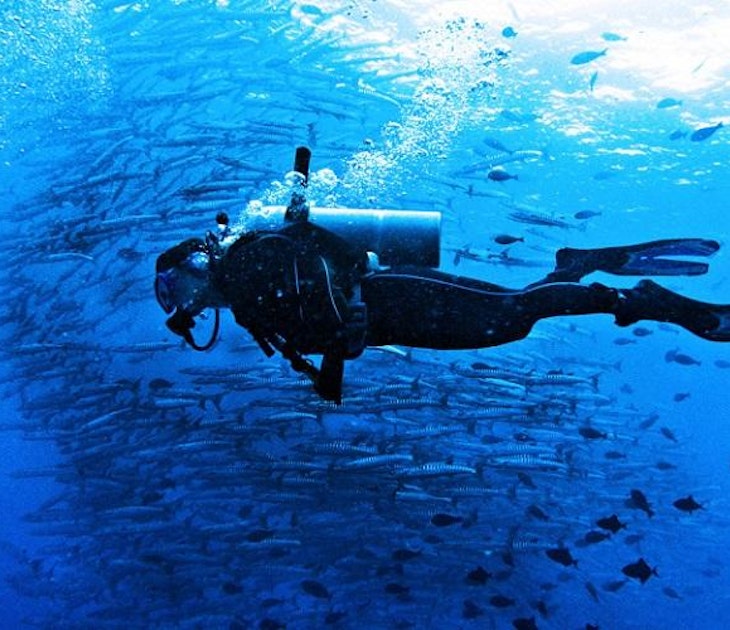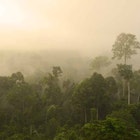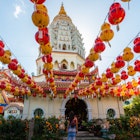On the island of Borneo, Sabah’s parks and wildlife preserves encompass some of the most pristine natural beauty in the world, with thousands of square kilometres of jungle, mountains, riparian lowlands, wetlands and valley bottoms that seem untouched by humans or technology.
Unfortunately, getting into these parks requires dealing with the most human of institutions -- bureaucracy -- for permission to enter. Climbing Mount Kinabalu, diving in Sipadan or visiting the Danum Valley and Maliau Basin generally all need to be organised in advance. While most travellers understand the need for gatekeepers to protect the parks, it is less clear why the gatekeepers are private park concessionaires instead of government officials.
Because park access is intertwined with public-private partnerships, it can cost travellers an arm -- and sometimes a leg -- to book a visit to Sabah’s parks through an officially designated tour company. However, there are a few ways to make your travel experience in Sabah cheaper and more independent.
The Tabin Wildlife Reserve, located only 48km from the town of Lahad Datu in eastern Sabah, is a smaller alternative to the pricier and more popular Danum Valley, a nearby conservation area that preserves ancient Borneo jungle. Staying in Danum means either booking through the Borneo Rainforest Lodge, a posh jungle camp where packages start at 2390 Malaysian ringgit, or going through the often booked dorms of the field research centre, where the combined costs of meals, transportation and ranger fees come to almost 1000 Malaysian ringgit.
While the Danum largely consists of primary rainforest, secondary trees of similar beauty can be found in Tabin, where you will find 122,000 hectares of preserved land, enough birds to excite the most hard-bitten ornithologist and Sabah’s three largest mammals: the Borneo elephant, Sumatran rhino and the tembadau, a local species of wild cattle. Primates also swing through the trees, and many orangutans that are rescued and rehabilitated in other parts of Malaysia are reintroduced into the wild in Tabin.
The reserve is run concurrently as the Tabin Wildlife Resort, a plush collection of jungle bungalows and cottages -- and the only accommodation option in the park. The resort is moderately priced, starting at around 504 Malaysian ringgit for a three-day package that includes all food, drinks and game drives. That is decent value, but it comes with a warning: it can be difficult spotting wildlife in a jungle. You may pay for three days of seeing trees.
A cheaper option that technically takes you outside of the parks system is to head up the Kinabatangan River (Sungai Kinabatangan) from the towns of Bilit and Sukau. Here you will find more than a dozen riverside lodges offering backpacker-quality accommodation in chalets that charge around 150 Malaysian ringgit per night. This fee includes boat trips on the Kinabatangan; and because so much of the surrounding jungle has been cleared for palm oil plantations, there are heavy wildlife concentrations along the river. You can also do homestays in Sukau and Bilit – look for signs in each village advertising the service. These are very cheap – around 40 Malaysian ringgit per night, plus 60 Malaysian ringgit to book a river trip; just be aware you will be treated as part of the family and may not get much privacy. On the other hand, the cultural experience is invaluable.
In the north Sabah interior, climbing Mt Kinabau, the tallest mountain in Borneo at 4095m, is the highlight of many trips to the region -- but getting up the mountain is a little more complicated than your average Sunday stroll. The main cost involved is lodging (upwards of 300 Malaysian ringgit), largely controlled by the Sutera Harbour Resort which has a monopoly on accommodation within the park. To save yourself money, try a one-day ascent of the mountain. You will need to arrive at the park gates before 7 am and will still pay park and climbing fees of around 135 Malaysian ringgit; but if you set out in the early morning, you will be down the mountain in the late afternoon. Clearly, this option should only be attempted by the physically fit: you do not need climbing experience as the trek is almost entirely walking (with a small amount of scrabbling) but it is still a taxing hike.
For something a bit less strenuous, the entrance area of Mt Kinabalu park is beautiful and features some easy walking trails that showcase alpine Borneo flora and fauna. Hiking will only costs you the 15 Malaysian ringgit park entrance fee.
Getting to Mt Kinabalu via public transportation is also easy; any bus going between Kota Kinabalu and Sandakan, Sabah’s two largest cities, drives by the park entrance (you can flag buses down here as well). The fare is around 15 Malaysian ringgit.
The Maliau Basin may be one of the most primeval destinations in Sabah: a bowl-shaped jungle depression surrounded by unscalable jungle mountains that was unexplored until World War II, when it was spotted from the air by an Allied pilot. Today, this is the place to see actual primary tropical rainforest – trees that have never been felled by human hands. Organising a tour into the basin can run into thousands of dollars. However, it is possible to visit independently by renting a car to visit the basin (there is no public transportation to this remote corner of Sabah).
A visit to the Maliau is potentially rewarding. Do not expect lots of wildlife because the forest is untouched and there is a lot of space for animals to hide. Instead, the reward is seeing one of the last corners of the planet unsullied by civilization. For information on vehicle rental, talk to the folks at GoGo Sabah in Kota Kinabalu, who can help you contact the park directly so you can visit independently. You will sleep in dorm-style accommodation and have to hire a ranger guide, with the combined costs coming close to 1000 Malaysian ringgit, but that is less than half the cost of arriving via a package tour.






